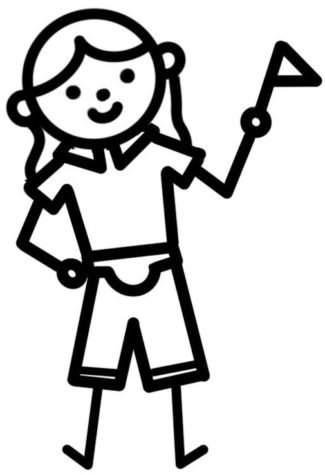Column: Sara’s Official Guide Through the Music Genres: What’s Poppin’?
April 8, 2022

 Pop music has undoubtedly been one of the most influential genres of the 2000s, giving rise to an endless number of subgenres. While many of the pop-genres stand out to me, nothing beats the simple, catchy, upbeat genre that is dance pop.
Pop music has undoubtedly been one of the most influential genres of the 2000s, giving rise to an endless number of subgenres. While many of the pop-genres stand out to me, nothing beats the simple, catchy, upbeat genre that is dance pop.
Towards the end of the 1970s, the term “disco” was being used less and artists were looking to be more experimental with their music. Thus, modernized versions of disco-based music were emerging under new names such as “post-disco,” “club,” and of course, “dance pop.”
Dance pop’s etymology implies exactly what its origin suggests. It is the combination of dance music and pop music. With the upbeat tempo of dance music and the catchy lyrics of pop music, this genre showed obvious potential to be a radio sensation.
Although the music is fun and entertaining, it is more detached from the artists than most music that emerged during this period. This genre became very producer-driven as record labels would create the song and look to hire singers to claim them and turn them into a hit.
However, this doesn’t make the music any less enjoyable. In fact, many of today’s biggest artists got their start in the dance pop genre—one of the biggest names being none other than Madonna. When the rest of the industry was blindly following the producers, Madonna set herself apart by creating and owning her own music. She was the primary songwriter on her self-titled debut album, and eventually, by her third album, True Blue, she became co-producer. This feat was unheard of at the time of these productions which made her even more of an icon in the industry.
Dance pop started to take over the music industry in the 1990s when artists and groups such as NSYNC, Britney Spears, Backstreet Boys, and many more emerged. As music technology started to advance, dance pop began to feature more techno-based sounds and the auto-tune revolution began.
This genre was still topping charts through the turn of the century and artists of its time were still growing. Dance pop began shifting back to its disco roots during the mid-2000s and the industry saw new and arguably the most influential artists of the genre rise to fame like Rihanna, Katy Perry and Lady Gaga.
Now nostalgic to people my age, these artists and their predecessors introduced the world to the beat-focused, catchy genre that is dance pop. Compared to other genres, dance pop is still young, and although it initially stemmed from disco, it still has time to grow and influence the industry in more ways than it already has.


